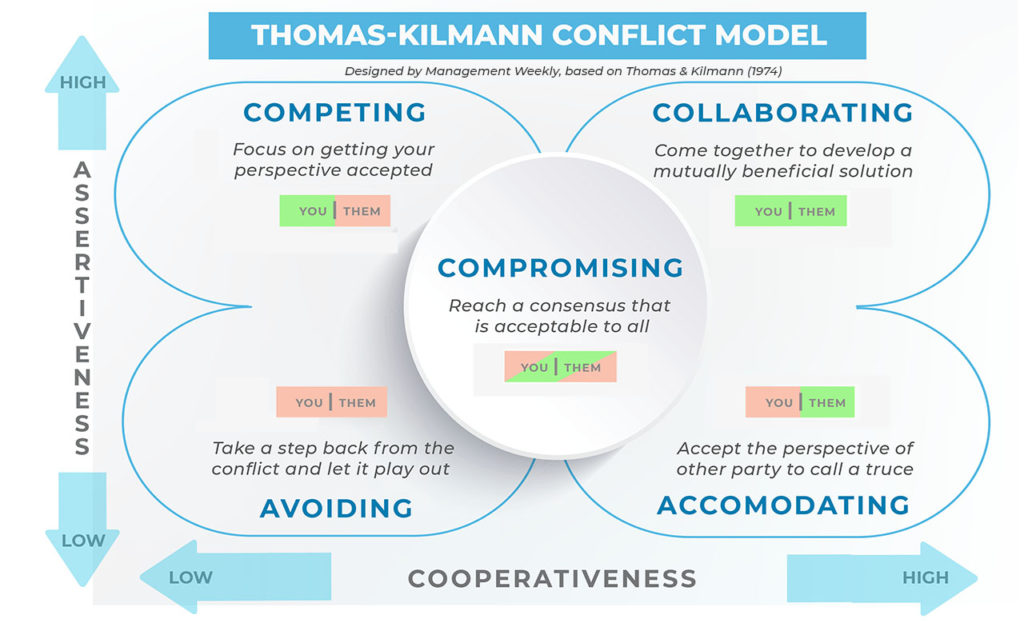Why do some teams consistently excel while others falter?
The journey to becoming a high-performing team or individual is fraught with obstacles. How you approach these obstacles—whether by navigating around them gracefully, charging through boldly, or sidestepping cautiously—shapes your path to success. Many of our obstacles are unique to our context and mission but you can count on one common thread: conflict. This is because any complex endeavour that requires collaboration (such as becoming a great team or maintaining a healthy marital relationship) also requires us to reckon with different ideas, personalities, and perspectives that test our own views, thought processes, and sense of fairness or right/wrong.
I like to think about conflict through two lenses: the head and the heart. The heart helps us recognise that conflict can be a personal and emotional matter that must be dealt with on that level, while the head helps us to develop proven strategies that creates healthier conflict and appreciate the impact it can have on individual, team, and system performance.
The Head

The Thomas-Kilmann model offers a practical framework to understand the modes in which we engage in conflict across the spectrum of assertiveness and cooperativeness. Knowing which mode(s) of conflict we tend to operate in and the effect this can have on outcomes is essential to create meaningful improvement.
- Competing: “My way or the highway” – prioritising your goals over relationships, useful in urgent or high-stakes situations but it can damage relationships and discourage collaboration if overused.
- Collaborating: “Two heads are better than one” – finding win-win solutions by working together, ideal for complex issues but can take significant time and effort, which may not always be practical.
- Compromising: “Let’s meet halfway” – a middle ground where both sides give up something to reach a solution quickly and maintain some peace, but can result in a halfway house where neither party is fully satisfied.
- Avoiding: “Whatever” – stepping back to delay or dodge the conflict when it’s not worth the effort or you don’t have the courage to create potential tension. The downside is problems can fester or escalate if left unresolved and resentment may grow as your needs won’t be met.
- Accommodating: “Whatever you want” – prioritising the relationship over your own needs, often to maintain harmony. If your own needs are consistently overlooked it can lead to resentment.
Most of the time we choose one of the conflict modes automatically based on our underlying psychology, disposition, and understanding of the situation. The goal here is to raise this decision to the conscious level and choose a style of conflict that creates the best outcome for you and/or your team while ensuring, as much as possible, the needs of all parties are met or at least heard.
The Heart

Ah, the heart. The real decision-maker in our lives. With the power to move mountains and galvanize us into action, we must understand and appreciate how our emotions and the tapestry of our lives—the experiences of our past that create who we are today—influence how we deal with conflict.
Take a moment to think about a recent conflict you’ve been in.
…. Thought of one? Good.
How did it make you feel? Did you embrace it, or shy away from it? How did the result affect you or your team’s dynamic?
Peeling back the layers, why did you embrace it or shy away from it? Reflecting on not just that recent conflict, but all conflicts you enter into, what patterns do you notice?
Perhaps there’s a certain type of character you shy away from or situation that compels you to compete. Maybe there are characteristics or situations that bring out the collaborator in you.
The real challenge in mastering conflict lies in unraveling your own patterns and learning how they shape your responses. Once you begin to do that—realising that these obstacles aren’t in the way, they are the way—you’ll be well on your way to creating healthier conflict patterns and, as such, improving the performance of you and your team.

